Several methods exist for calculating stamping force, and which one to use depends on the specific stamping process and the type of stamping force that needs to be calculated. Here are some common methods for calculating stamping force:
A basic formula for calculating stamping force breaks it down into a sum of several parts, including shearing force, unloading force, pushing force, edge pressing force, and deep drawing force. To calculate the stamping force for edge cutting and punching, you can use the formula P = k1δt*L, where P is the stamping force (in kg), δ is the shear strength (in kg/mm²), t is the sheet thickness (in mm), and L is the length of the cutting edge or the circumference of the hole (in mm).
Another method for calculating shearing force is the formula P=ltτ, where P is the shearing force (in N), l is the stamping perimeter of the part (in mm), t is the thickness of the part (in mm), and τ is the shear strength of the stamping material (in MPa).
Another formula is P=kltГ, where k is a coefficient (generally approximately 1), l is the perimeter of the product after stamping (in mm), t is the material thickness (in mm), and Г is the shear strength of the material.
For specific scenarios of calculating shearing force, if the shape of the part is small and the punch uses a flat cutting edge, the formula F=Ltτ can be used to calculate the shearing force, where F is the shearing force (in N), L is the perimeter of the sheared part (in mm), and τ is the shear strength of the stamping material.
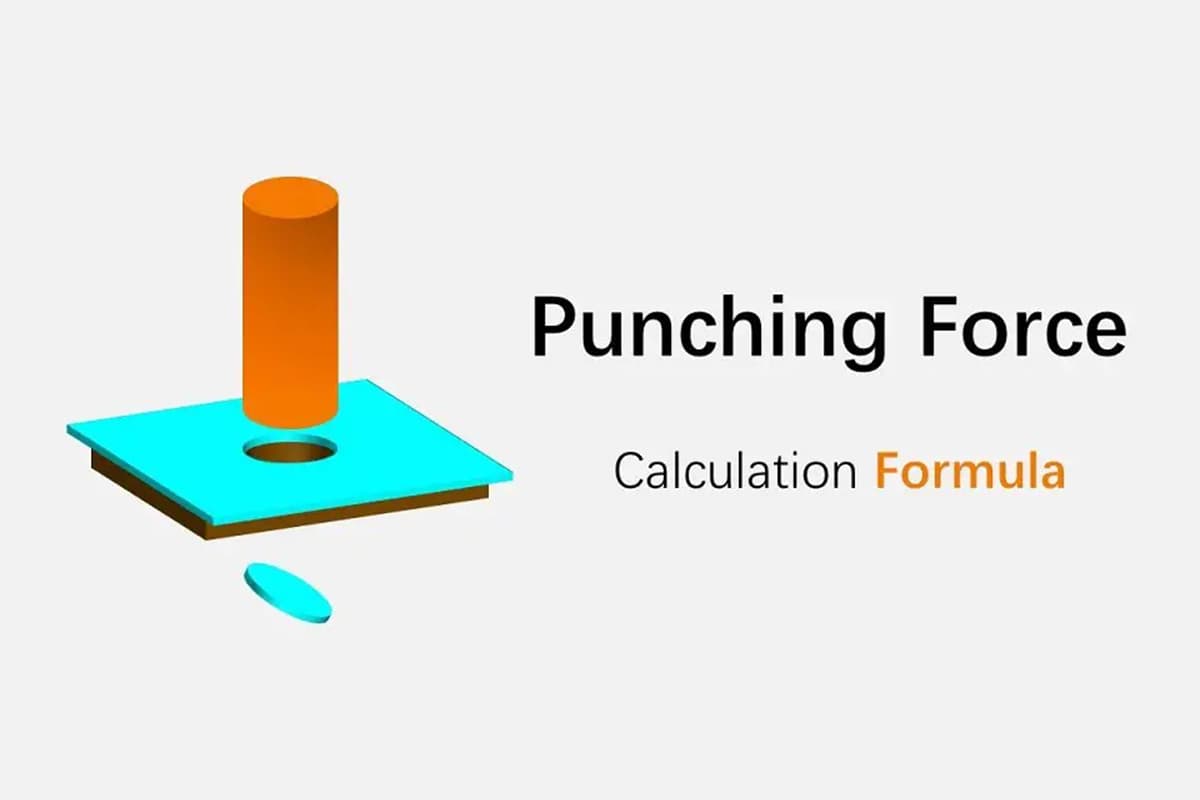
Punching Force Calculator
How to calculate the force (tonnage) of a punch press machine for power press machine?
I believe the following press tonnage calculator can be used to calculate the required punch force (blanking force) for your workpiece.
P.S: If you want to calculate hydraulic press tonnage, you can use our hydraulic press tonnage calculator.
Related calculator: V & U-shaped Bend Force Calculator
Press Tonnage Calculation Formula
If you need to punch round, square, or any other type of hole through a given metal thickness, you’ll need to determine the punching force required to accomplish this task.
To calculate the required press tonnage, you can use the following punching force calculation formula, which is also applicable for blanking force calculation.
Press Tonnage (KN) = Perimeter (mm) * Plate Thickness (mm) * Shear Strength (kn / mm2)
Converted into metric tons: dividing the result of KN by 9.81
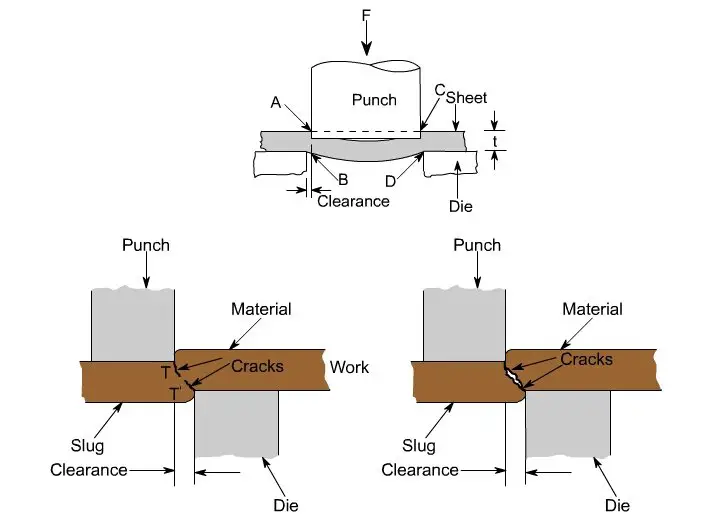
- Perimeter: The total length of the continuous line forming the boundary of a closed geometric figure.

- Thickness: The thickness that will be penetrated by the punching mold.
- Shear Strength: The physical properties of the plate, which are determined by the material of the sheet, can be found in the material manual.
Common materials’ shear strength are as follows: unit: KN/mm2
| Aluminum | Brass | Low Carbon Steel | Stainless Steel |
| 0.1724 | 0.2413 | 0.3447 | 0.5171 |
For various shear strength table, you can check out the following post:
e.g: If punching one square hole in the 3mm thickness low-carbon steel plate, side length 20mm, you will get:
- Perimeter = 20×4 = 80mm
- Thickness = 3mm
- Shear Strength = 0.3447kn/mm2
Punch Force (KN) = 80 x 3 x 0.3447 = 82.728 KN Convert into tonnage: 82.728 KN ÷ 9.81 = 8.43 Ton
For further information about shearing strength, including how to calculate it, you can refer to the Wikipedia article.
The formula mentioned can also be applied as the cutting force formula in press tooling or as the formula for determining the force required to punch a hole.
Punch and Die Clearance
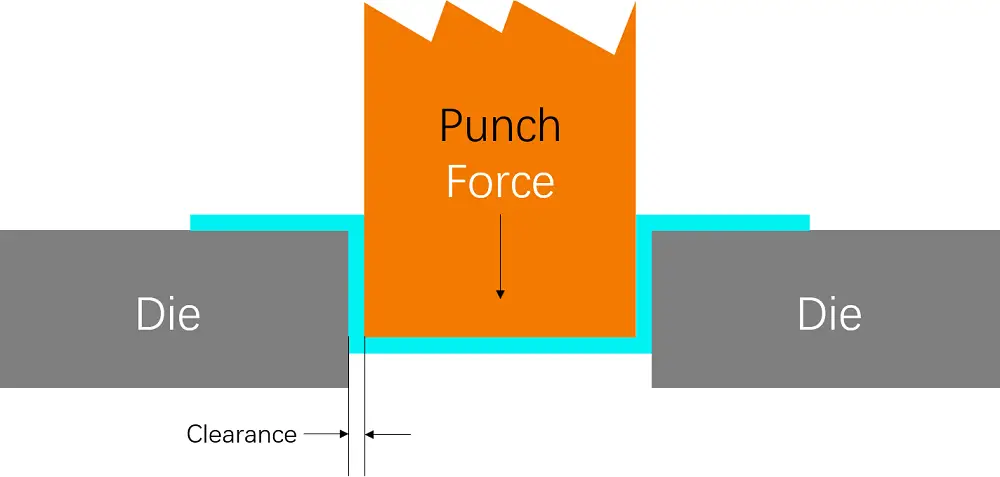
The clearance between the punch and dies is a critical factor in the punching process, and it is represented by the total difference.
For instance, suppose you are using an ø12 upper die and an ø12.25 lower die. In that case, the optimal clearance should be 0.25mm.
If the clearance is not proper, it can reduce the die’s service life, cause burrs, and lead to secondary cutting. An irregular opening can also increase the demounting force.
Moreover, the die clearance depends on the material and thickness, and for carbon steel plates, it is recommended to use a value between 12-18% of the thickness.
See also:
If there are no special requirements for the CNC punch, you can refer to the following table for selecting the die clearance.
Punch Press Die Clearance Table
| Thickness | Mild Steel | Aluminum | Stainless Steel |
| 0.8-1.6 | 0.15-0.2 | 0.15-0.2 | 0.15-0.3 |
| 1.6-2.3 | 0.2-0.3 | 0.2-0.3 | 0.3-0.4 |
| 2.3-3.2 | 0.3-0.4 | 0.3-0.4 | 0.4-0.6 |
| 3.2-4.5 | 0.4-0.6 | 0.4-0.5 | 0.6-1.0 |
| 4.5-6.0 | 0.6-0.9 | 0.5-0.7 | / |
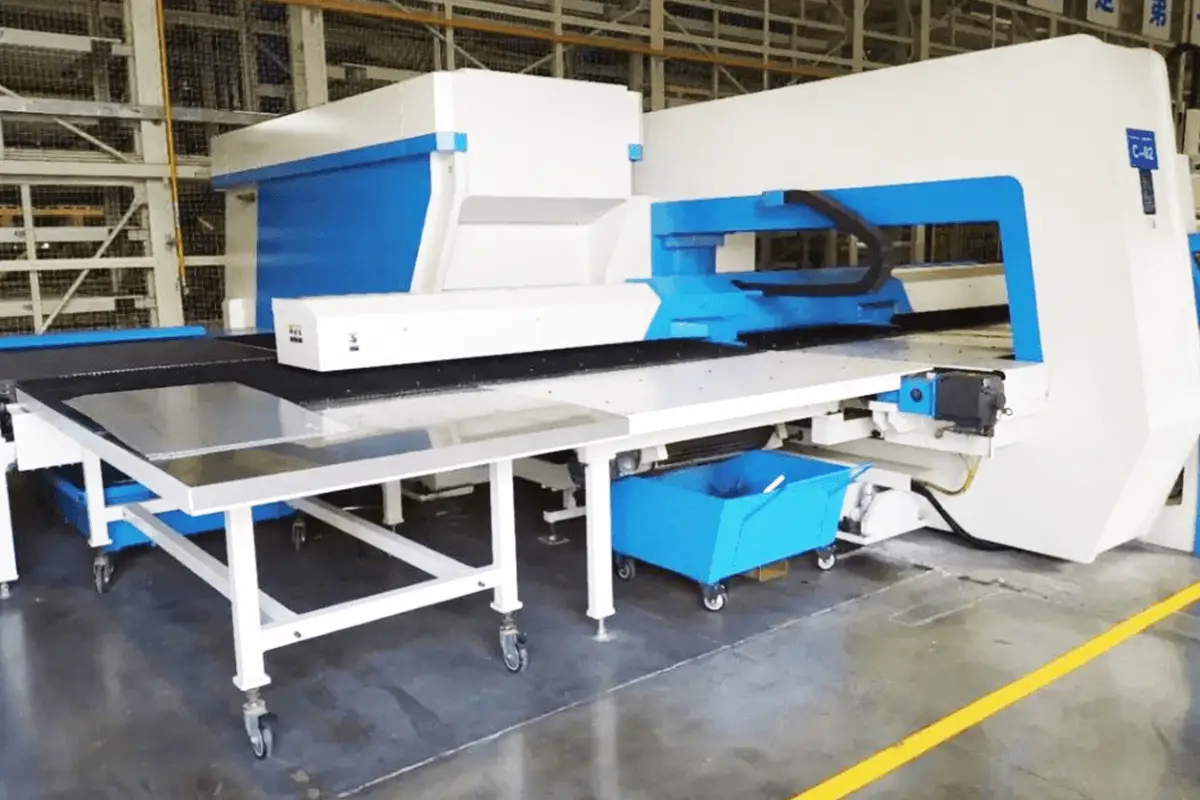
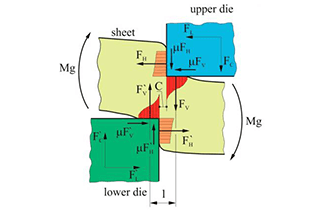
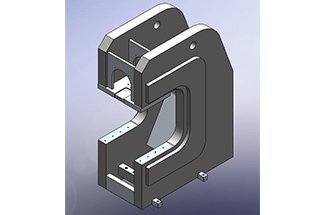
How would this apply to punching ribs into sheetmetal, instead of holes. Would you change the shear strength to yield strength?
For ribs bending force calculation, you need to use press brake bending force calculator, here is the link:
http://www.machinemfg.com/press-brake-tonnage-calculator/
This is exactly what I was looking for. Thank you.
this is a good site!
i was looking for information about the force when cutting with a guilotineshear
it is for schoolassignment
so just 1 straight line
i need the cutting/shear force of this. (with calculation)
then i need to convert to bar for a hydraulic press (with calculation)
this is for cutting low carbon steel
with specification of 1000mm with and 8mm thick.
when use the calculator i came to 281.10 metric tons
and when converted it i get 27 bar pressure is this correct?
also the blade of a guilltineshear is in this case straight on the steel but for pressure reduction the cutting blade have an angle. if the 27 bars is correct how do i calculate the force that is on the blade with a angled cutting blade along the 1 m steel plate
sorry for the long text (english is not my first language)
thank you in advance al help is welcome since this is not my daily job knowlege
[email protected] is my email
We have written one article talking about sheet metal cutting force calculation, here is the link:
http://www.machinemfg.com/sheet-metal-cutting-force-calculation/
HYou will get answers there.
How do I calculate ton if I am using a chisel point punch
I need to know punching calculations for plastics
How to calculate the force and the required cylinder for that punching operation.
How clearence need to be given for the punch and die.
Please send those details to my email.
[email protected]
Just send to your email.
The formula mentioned in this article is can also be applied to plastic punching, what you need to know is to find out the shear strength of the plastics.
Please send those details to my email.
[email protected]
It’s been sent.
hello sir, i required a force calculation for punching sheet of paper on a punching machine please provide me a solution.
Would anyone on here happen to know the shear strength for extruded vinyl like in windows?
Very nice site for study.
we manifacture of stainless steel hinges how press tonage for hinge blanking